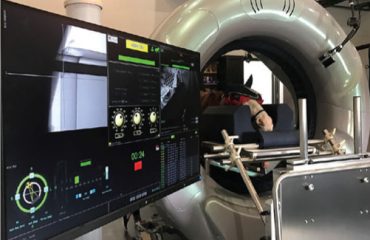
Margie Sugarman
Photo by Lauri Foster
By Margie Sugarman
Margie Sugarman is a leading board certified psychotherapist and sports consultant based in New York. Margie’s desire is to enhance performance through the connection between the mind and body, and her current client list includes Olympic, professional and amateur athletes across the country. Her experience employing various therapeutic modalities has helped equestrians win classics, junior medals and Grand Prix. Do you have a question you want Margie to answer? Send questions to editor@sidelinesnews.com.
I recently had a bout of vertigo. It made me start to question myself on my horse. It has messed with my confidence. When you can’t trust what you’re seeing because things are moving, it makes walking — let alone riding — more difficult. Once it cleared up, I thought I’d be fine in the show ring. It turns out I’m now not trusting my eye. How would you recommend I work on this?
— Ali, 33-year-old amateur
Foremost, make sure you have medical clearance before getting in the saddle. Vertigo is a very serious condition since it causes a sensation of spinning while stationary. These symptoms can last a few minutes to a few hours or more and may come and go. Sudden body movements can play havoc with the equilibrium (inner ear) and ultimately physical balance. Balance in riding is essential, so make sure all is well before getting on your horse.
Sometimes our “mind” can be the culprit that challenges the mind/body connection, which is essential in any athletic endeavor. A rider doesn’t forget how to ride — muscle memory is always there to help. It’s our internal struggle that challenges our mind.
Anxiety is a natural human response that serves a purpose. The goal shouldn’t be to dismiss it entirely, just make it a healthy, manageable part of our lives. If the rider becomes anxious in a situation they’ve experienced numerous times before, this could be related to them having a fear of the consequences that might arise in that situation. Flashbacks to the memories that haunt them trigger their anxiety to kick in. We must constantly reinforce our minds using techniques that strengthen and imprint positive thoughts and behaviors.
Affirmations can help us imprint positive thoughts that override our negative perceptions. With this form of imprinting, a statement said with confidence about a desired truth helps many people make significant changes in their lives. These positive statements, when used in the proper way, result in great success in overcoming the negative thoughts. An affirmation has the ability to program your mind into believing the stated concept. If an unwholesome belief is deeply rooted in our unconscious mind, then it has the ability to override a positive thought even if we aren’t aware of it. This is why, for many people, affirmations need to be personal and powerful.
The individual’s outlook and using affirmations help to reduce stress levels, boost self-esteem and improve health. Constant reinforcement of positive energy to the mind and body helps the individual enjoy life by having a healthy outlook and attitude when life’s adversities come their way. Another positive and reinforcing technique is watching past videos of classes that the rider has excelled in. Having the rider visualize the course — re-ride it in their mind — will impact and help to reinforce self-confidence.
A simple acronym I give my clients that helps to address the mind and body connection to overcome fears is:
Face
Each
Activity with
Reasonable
Security
When it comes to positive thinking, practice really does make perfect. The more you reinforce positive thinking, the more likely you’ll be able to continue this line of thinking.











